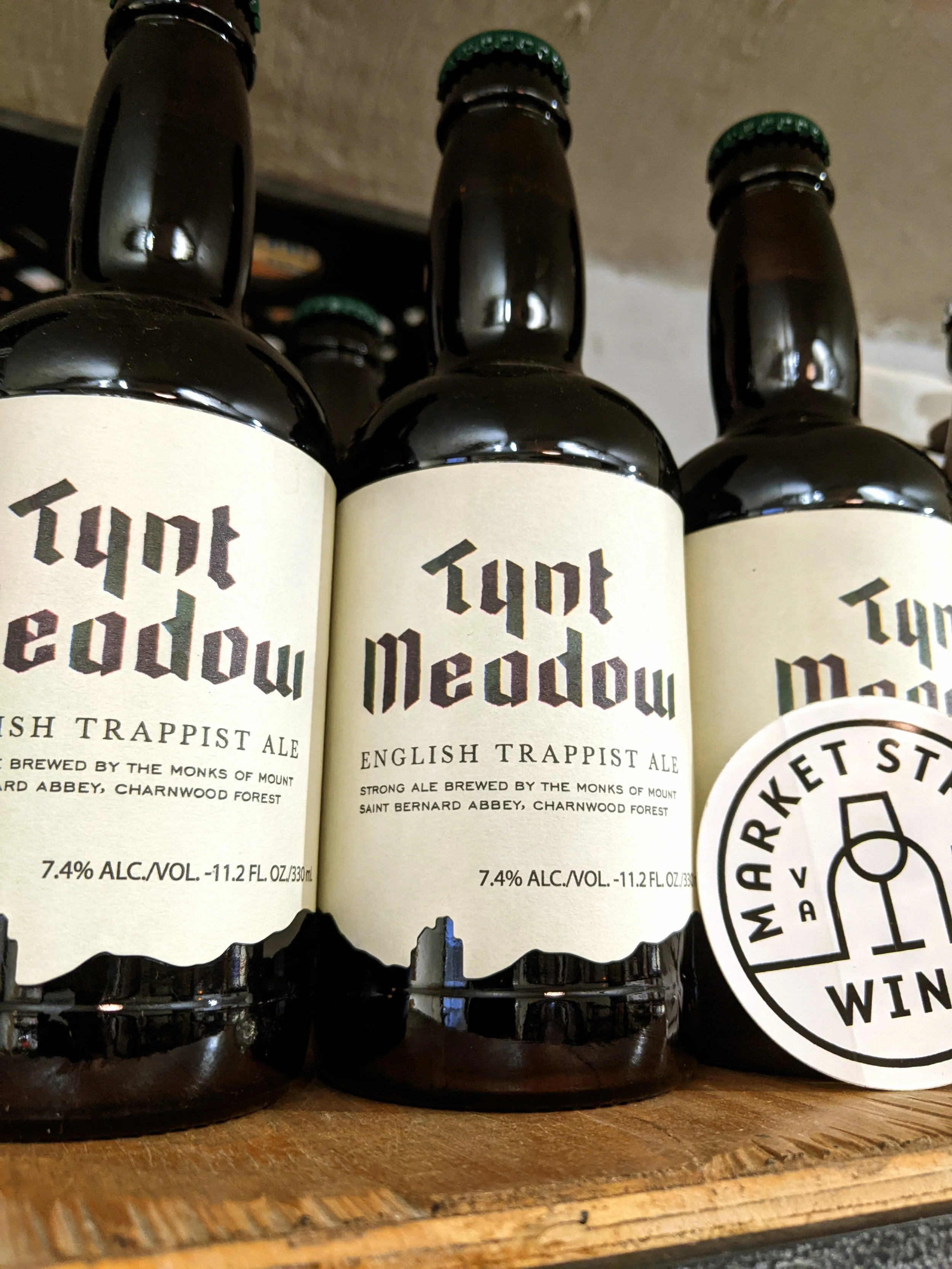Beer Spotlight!
Tynt Meadow
$5.99 for the 12oz bottle
Trappist Ale
So what’s with these Trappist monks and their brewing? Well, it works like this. Trappist monasticism is a breakout branch from Cistercian monasticism, which, in turn, is a breakout branch of Benedictine monasticism. One of the rules of St. Benedict on how one should properly run a monastery is that, unlike churches, monasteries should be self-sufficient, taking no stipends from the greater church — a tenet that must have been very easy for the Vatican to get behind. Fortunately, St. Benedict was also a big fan of the salvational power of work. Thus industry should go hand-in-hand with prayer, as the monastery supports itself with the fruits of its labors. So, Benedictine monks are known for producing goods of all sorts, beer being the one we care the most about.
Thus, when the brothers of the St. Bernard Abbey outside of Leicester, in the English Midlands, realized that dairy farming in the 21st Century was no longer a “cash crop,” as it were, they turned their thoughts to what could take its place, eventually settling on brewing. The monastery had brewed in the 19th Century, but those recipes were long lost. They would have to start from scratch, which they did in 2017. A year later, the brewery was their “principle field of labour.” Unlike other Trappists breweries, the St. Bernardan monks do all the beer tasks from brewing to packaging. Like all other Trappist breweries, they seek to make enough to cover their costs and to fund local charitable programs.
We’re so used to Trappist beer being synonymous with “Belgian beer,” it’s refreshing to be reminded that that need not be so. Case in point, the English St. Bernardan monks make a very English ale. The Tynt Meadow is a strong dark ale (Well, strong for the English - 7.4%.) made from English hops, malt, and yeast, and it is a shocking surprise. First off, the nose is heavenly (no pun intended) sporting a caramel base that hints at the complexity to follow. The brew itself is like a bran muffin made with a healthy dose of brown sugar. But, wait! That’s not all! It’s quietly but resolutely complex with notes of apple and golden raisins swimming around while the hops conspire with the malts to convey hints of tobacco or campfire smoke on the finish. This is not the beer you would expect from a group of monks who just came up with a recipe.

